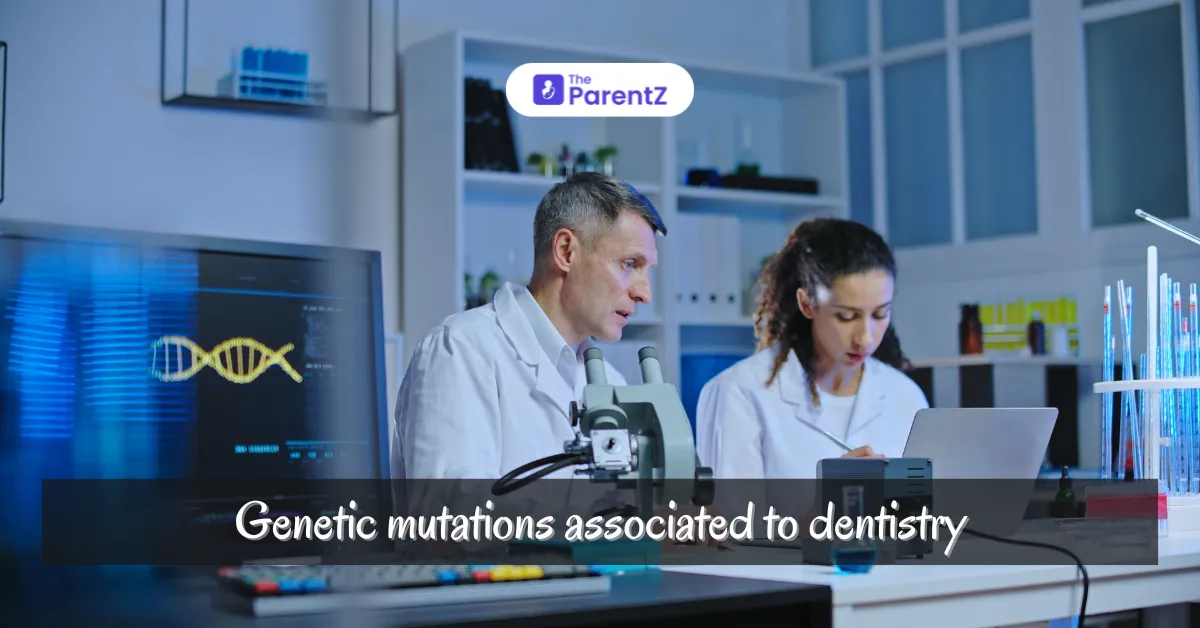The field of dentistry goes beyond cavities, braces, or cleanings. In recent years, advancements in genetic research have uncovered how genetic mutations can significantly impact oral health. These mutations can influence tooth development, susceptibility to oral diseases, and even craniofacial structures. Understanding these genetic factors can lead to better prevention and targeted treatments, especially in pediatric dentistry. But first, it is important to explore what genetic mutations are and how they differ from other types of mutations.
What is a Genetic Mutation?
A genetic mutation is a change in the DNA sequence that makes up a gene. DNA carries the genetic instructions used in growth, development, and functioning. Mutations can occur naturally during DNA replication or due to external factors like radiation or toxins. These changes can be hereditary, passed from parents to their offspring, or acquired over time.
Mutations can range from small alterations in the DNA to larger chromosomal changes. While some mutations are harmless, others can disrupt normal gene function, leading to various conditions or diseases. Genetic mutations differ from other types of mutations, such as epigenetic mutations, which affect gene expression rather than altering the DNA sequence itself.
Genetic Mutations Relevant to Dentistry
Several genetic mutations are associated with dental and craniofacial conditions. Below are a few significant examples:
1. Amelogenesis Imperfecta (AI)
AI is a genetic condition affecting enamel formation, leading to soft, thin, or discolored enamel. Mutations in genes like ENAM, AMELX, and MMP20 are responsible for this condition. Children with AI experience tooth sensitivity, increased risk of cavities, and aesthetic concerns.
2. Dentinogenesis Imperfecta (DI)
Caused by mutations in the DSPP gene, dentinogenesis imperfecta results in discolored, translucent, and brittle teeth. The teeth are prone to wear and fractures, requiring extensive dental care. This condition can also be linked to other skeletal issues.
3. Cleft Lip and Palate
Cleft lip and palate are complex craniofacial conditions influenced by both genetic mutations and environmental factors. Mutations in genes like IRF6 and MSX1 have been linked to these malformations, which can affect not only facial aesthetics but also feeding, speech, and dental occlusion.
4. Hypodontia
Hypodontia, the congenital absence of one or more teeth, is often linked to mutations in genes such as PAX9 and MSX1. It can lead to difficulties in chewing, speech, and alignment, requiring orthodontic or prosthetic treatments.
Impact of Genetic Mutations in Dentistry
These genetic mutations significantly influence oral health. Conditions like amelogenesis imperfecta or dentinogenesis imperfecta increase the likelihood of decay, fractures, and other complications. Meanwhile, craniofacial anomalies like cleft lip and palate not only require dental intervention but also multidisciplinary treatment involving surgery and speech therapy.
Understanding the genetic basis behind these conditions allows for early detection, personalized treatment plans, and better long-term outcomes for patients.
Testing for Genetic Mutations
With advancements in genetic testing, it is now possible to identify these mutations early. Common tests include:
• Whole Genome Sequencing (WGS): WGS examines the entire genetic code, identifying mutations across all genes, including those related to dental and craniofacial health.
• Targeted Genetic Testing: This focuses on specific genes associated with known conditions like amelogenesis imperfecta or cleft palate.
• Prenatal Genetic Screening: Early screening can detect potential genetic conditions that may impact oral health, allowing parents and healthcare providers to plan accordingly.
Testing can help in early diagnosis, guiding both dental treatments and preventive measures to mitigate complications.
Conclusion
Genetic mutations play a significant role in shaping oral health, from enamel disorders to craniofacial anomalies. By understanding these mutations, dental professionals can offer more personalized and effective treatment plans. Moreover, genetic testing is an invaluable tool in identifying risks early on, improving patient outcomes, especially in pediatric cases.
Note for Parents
If your child shows signs of abnormal tooth development, such as discoloration or delayed eruption, it’s crucial to consult a dentist or a genetic counselor. Early detection through genetic testing can prevent future complications and ensure your child receives the best care tailored to their unique genetic makeup. Dental conditions like amelogenesis imperfecta or cleft lip and palate may seem daunting, but with modern treatments and early intervention, your child can enjoy a healthy, beautiful smile.








Be the first one to comment on this story.